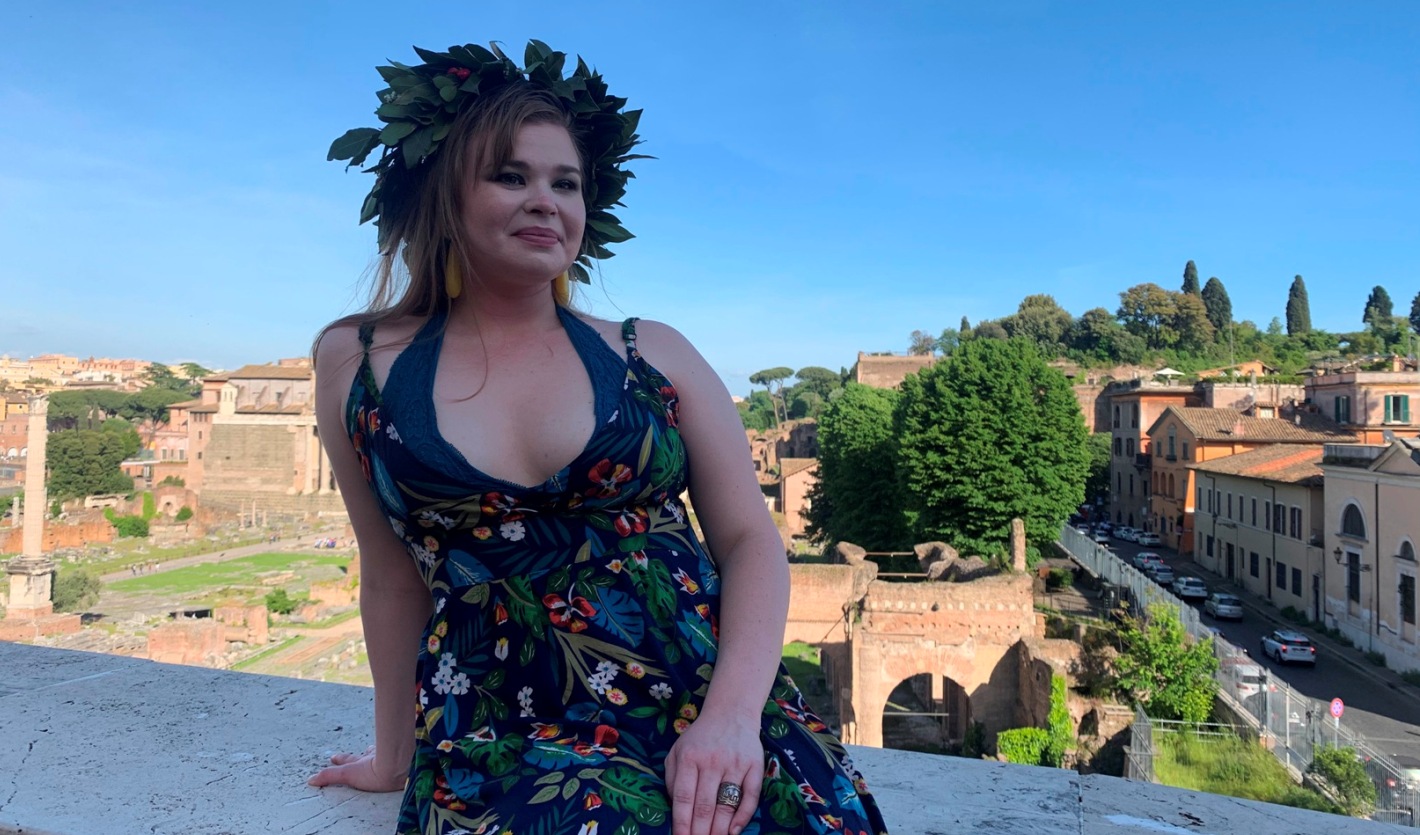Erin Bello, from North Carolina, graduated from JCU with an MA in Art History in 2019. She specialized in Roman art and became interested in submarine archeological sites, which she focused on in her post-graduate research. She is now in Cherokee, NC, working on preserving the sites of the “Graveyard of the Atlantic.”
Tell us about your background.
I grew up in the Eastern United States, in the Piedmont region — which shares the same name as the Italian region but is not quite as scenic — and attended the University of North Carolina at Asheville. The introductory freshman colloquium I chose was Ancient Greco-Roman Warfare and it introduced me to the Classics Major, which quickly led me into an Ancient Greek Art course. Then in the spring semester I ended up studying Ancient Greco-Roman art. It was one of the best decisions of my early academic career and it led me to explore schools and programs that would allow me to further my love for the ancient world.
There is something about ancient art that, to me, defies expectation. We are constantly bombarded by images of pale white statues, classical temple facades, films, and literature steeped in ancient iconography. Yet nothing encapsulates these cultures more than the art they created purely for the joy of decoration and ornamentation. My first foray into ancient studies was through history and literature – the Melian Dialogue from book V of The Peloponnesian War by Thucydides. When I took Greek Art, it revealed to me far more about the culture than any historic narrative could; I could never look at history in the same way, having a concurrent knowledge of the art.
Tell us about your experience at JCU. What did you take away from your classes? What was your thesis about?
Going to John Cabot allowed me to study the Roman culture on site, see the remnants of Ancient Rome survive in the heart of the modern city, Trajan’s Market, the Colosseum, the Baths of Caracalla, all within a stone’s throw of campus. Ancient works fill the Vatican Museums, the Capitoline Museums, and Centrale Montemartini. Professor Inge Hansen’s course on Ancient Roman Portraiture and Professor Crispin Corrado’s Ancient Roman Wall Paintings were two of the most integral courses in my education. Both professors had an incredible ability to reframe ancient art and its meanings and expected us to challenge our own beliefs and considerations about it.
Professor Hansen and Professor Corrado became my two thesis advisors. Both professors have inherently different styles in writing and teaching, and I think that was to my greatest advantage, because they pulled me in different directions, allowing me to constantly view my work from opposing perspectives. My master’s thesis centered around the toga, an ancient Roman garment, which is still intrinsically ingrained in modern western society and culture thanks to modern media, film, and fraternity house parties. It is the most popular form for a Roman male to be depicted in and is something that anyone who has seen Animal House could most likely recognize. It was so consistent over three hundred years of Roman rule, as it was used through Republic relief sculpture and still worn by Justinian in the mosaic at San Vitale in Ravenna. Its changing iterations and sartorial value both physically and iconographically demanded that it be viewed less as a symbol and questioned how these sculptures moved and worked in public spaces. It was a paper unlike any other I have written, and I still take pride in it as a piece of academic work.
What did you do after graduating from JCU?
After my time in Italy came to an end in 2019, I returned home but still dreamed of returning to the country I had learned to love so deeply. I was pointed towards the ARCA Program, the Association for Research into Crimes Against Art, and applied. Taking place in Amelia, in the Umbria region, a 40-minute distance by train, it’s a rural and small city that is a far cry from bustling Rome. The post graduate program takes place over the course of the summer, spanning about three months, and focuses on art crime, theft, and destruction.
While attending this program I found a great passion for underwater archaeology and recovery, a compliment to the SCUBA certification I earned while studying at JCU. I had the opportunity to learn in Baia, an ancient city near Naples now submerged due to seismic activity, where divers can visit the archaeological park full of preserved ancient ruins, suspended in time. My work at ARCA led me to further my passion in maritime history in North Carolina, whose coast is famously called the Graveyard of the Atlantic, and it was the focus for my final research project for the program.
What are you up to now? What are your plans for the future?
Although I have traveled quite a bit, I have returned to North Carolina. I worked for a small museum for a while as the Head Archivist and Collections Manager. Now I am working on creating a post graduate program with several friends and cohort members from ARCA, to center around the art market and the various avenues of art history. My greatest hope is to benefit my home state by helping to preserve and maintain our many underwater archaeological sites and perhaps have the chance to work on bringing submerged pieces to the surface with the North Carolina Department of Natural and Cultural Resources.
I am forever grateful for my time at JCU, where pictures in my required art history books came to life. I still regularly speak to alumni I graduated with and think highly of everyone I met there.









